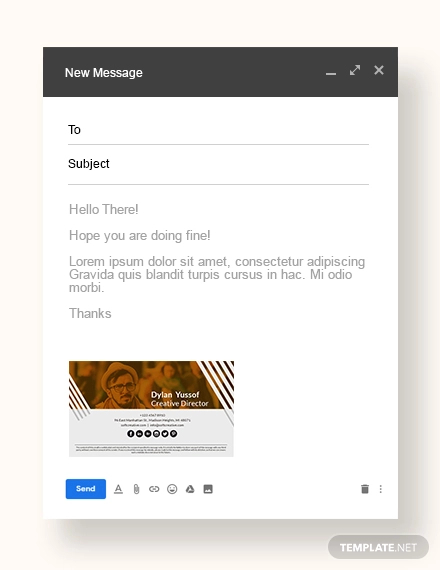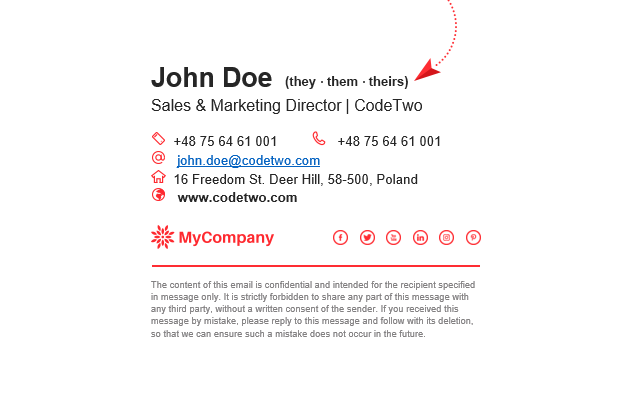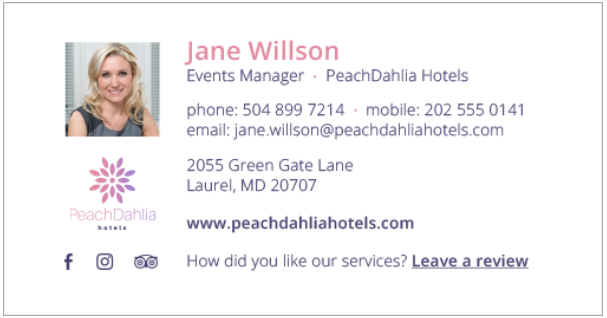

- #Format email signature examples how to#
- #Format email signature examples full#
- #Format email signature examples professional#
If you don't have this set up, make sure to include the following information on its own line underneath your close: Many companies require their employees to set up their email accounts to auto-insert a preset signature in all their emails.
#Format email signature examples professional#
Related: 63 Email Sign-Offs To Use for Professional Emails Signature Otherwise, a formal close would be appropriate.


If you're writing to a friendly colleague, you can use an abbreviated or casual close, or leave it out altogether. Thank you."Ī complimentary close, or sign-off, is a word or phrase that precedes your signature. For example, in the request for documents, you might write, "I look forward to receiving these documents from you. The concluding paragraph can be one to three sentences that thank the recipient for their time, recall the purpose of the email and suggest next steps. For example, if you're writing to request documents from the recipient, the second paragraph might list all the specific documents you need. Subsequent paragraphs can provide further information. If the recipient is unfamiliar to you, you can introduce yourself in this paragraph as well. The first paragraph explains why you're writing. In a formal email, it's a good idea to organise ideas into short paragraphs: The body of your email contains the important content or your key messages. Related: 6 Ways To Start Your Email Right Body However, for senior members of your organisation, people with whom you're unfamiliar or those whose names you don't know, a more professional tone is necessary. For example, if you're writing to a peer with whom you're friendly, a casual greeting may be appropriate. Ensure the greeting you use befits the relationship between you and the recipient. The greeting is the beginning of the email, so it can set the tone for the content that follows. A font in size 11 to 14 in black is likely to be the most readable. If you wish to customise the font, use a commonly used typeface such as Arial, Times New Roman or Calibri. It's often a good idea to use the default typeface and size in your email. Make your email easy to read and professional. You can pay attention to the length of the subject line to ensure it's brief enough to capture the recipient's interest but not too long to skim. This is likely to be the first thing the recipient sees when they receive your email, and may include only as much information as necessary. The subject line of an email is its title.
#Format email signature examples full#
A professional email address comprises your full name or initials along with numbers, or a mix of these. When you send a formal email, use your professional, not your personal, email address. Important elements to consider when writing a formal email include: Your email address Like its tone, a formal email format is direct and professional. What are the elements of a formal email format?
#Format email signature examples how to#
In this article, we discuss the formal email format, how to write a formal email and when to do so. Understanding how to craft a formal email is a vital professional skill. A formal email conveys a professional tone and shows that you respect the recipient's time. In many professional settings, it's important to write formal emails when corresponding with clients, coworkers or management.


 0 kommentar(er)
0 kommentar(er)
